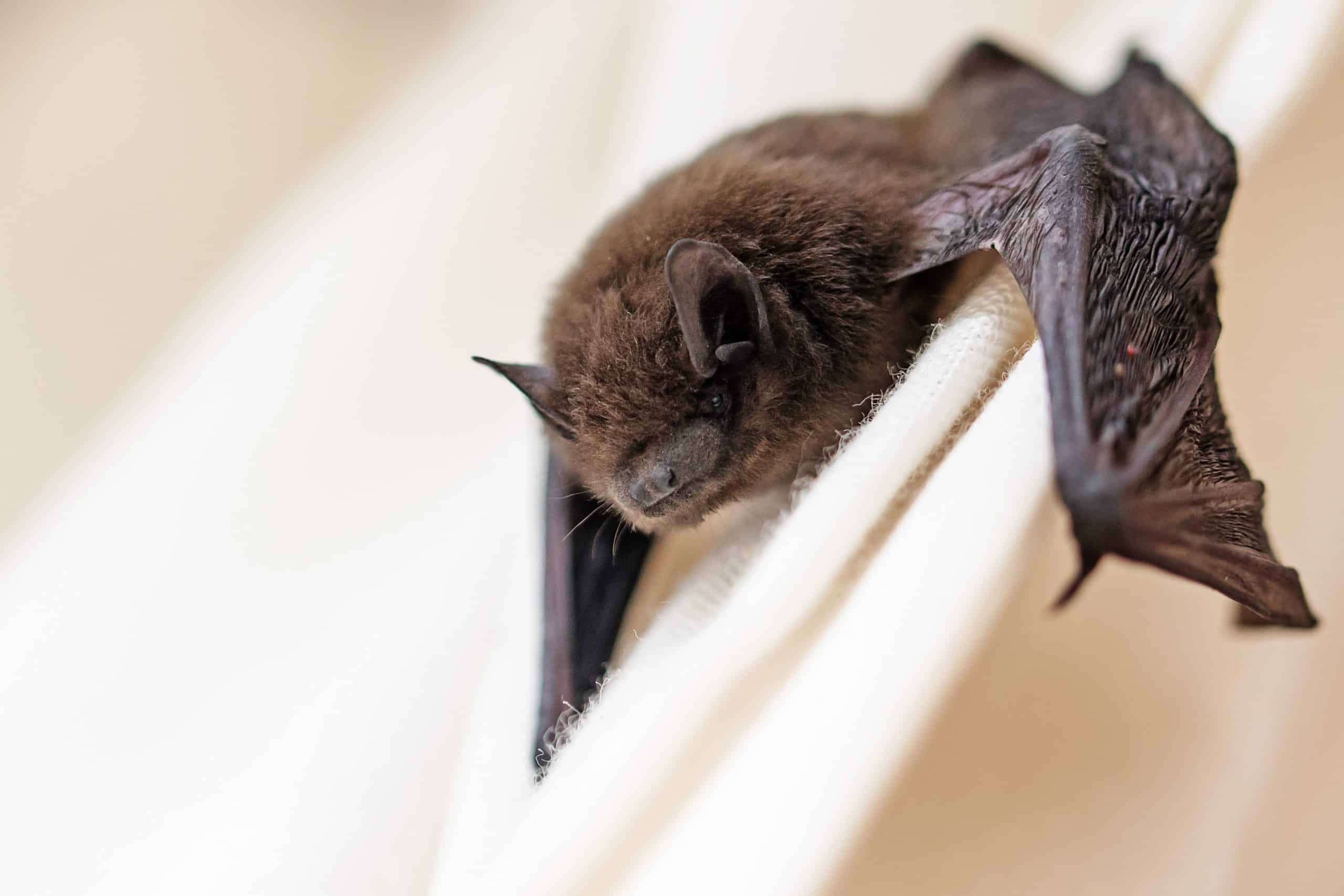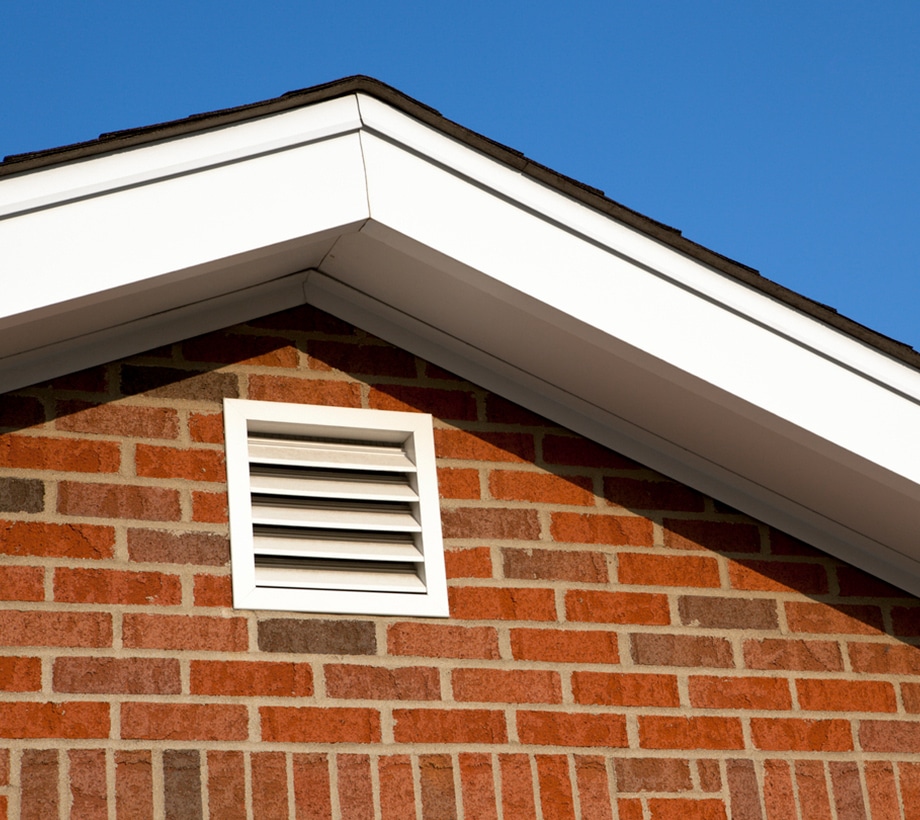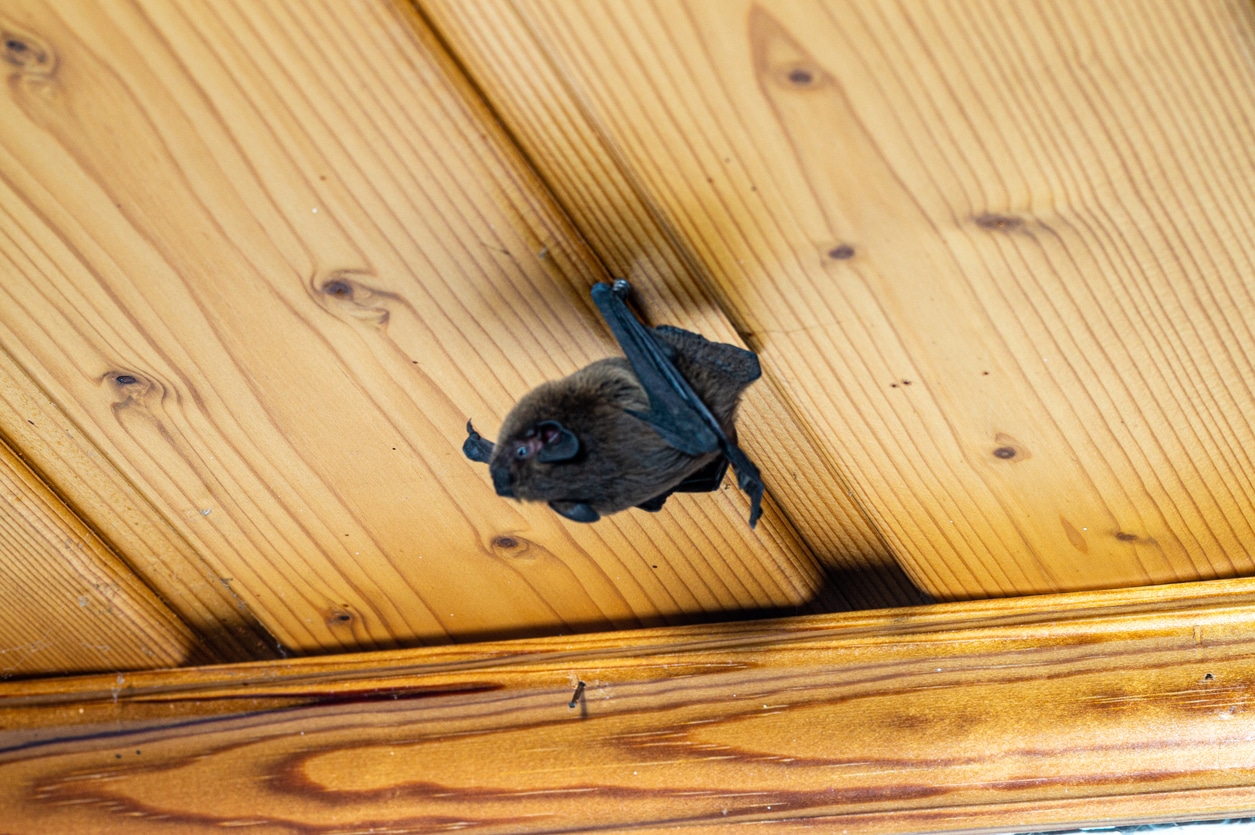
Bat Removal Company in Ypsilanti, MI
Safe & Effective Bat Removal for Homes & Businesses
Ypsilanti’s historic buildings, dense tree cover, and aging rooflines create easy shelter for bats—especially big brown bats that commonly roost in attics, soffits, and wall gaps. These colonies often go unnoticed until you hear scratching or fluttering at night, find guano near entry points, or detect strong odors inside your home.
Creature Control provides humane bat removal services throughout Ypsilanti. We inspect your property, identify access points, and install exclusion systems that let bats exit but not return. Our team also offers cleanup and sanitation to address bat droppings, odors, and insulation damage, restoring safety and cleanliness to your space.
If you’re seeing signs of a bat infestation in Ypsilanti, contact us today for local help and lasting protection.

Recognizing Signs of a Bat Infestation in Ypsilanti Homes
Bat infestations often begin unnoticed, with colonies nesting in quiet roosting sites such as soffits, roof vents, and attic spaces. Because bats are nocturnal and leave minimal disruption during the day, signs can be subtle at first. Over time, however, the presence of bat populations can lead to structural damage, odors, and pest issues inside your home.
Common signs of bat activity include:
- Bat Droppings (Guano): Found near entry points, attic flooring, or exterior siding.
- Dead Bats: Discovered in roof cavities or near gaps where bats exit and return.
- Fluttering Noises: Heard from walls or attic spaces after dusk as bats move.
- Strong Odors: Ammonia-like smells caused by guano and urine buildup.
- Pest Increase: Flies or beetles are drawn to bat waste and moisture.
- Stained Openings: Dark or greasy marks near active access points.
- Bat Sightings: Bats flying near the roofline at dusk, especially in warmer months.
Contact local pest control experts if you notice any of these warning signs on your Ypsilanti property. Acting quickly gives you the best chance to seal entry points, safely remove bats, and prevent long-term damage to your home.
Common Bats in Ypsilanti Homes
Ypsilanti’s wooded areas and older homes create ideal roosting sites for several bat species. Small gaps around soffits, vents, and roofing—some as narrow as 3/8 of an inch—allow bats to enter unnoticed.
Once inside, they settle in attics or wall cavities and form colonies that can grow quietly over time. Knowing which species are active in the area helps shape safe and effective removal strategies.
The most common bats found in Ypsilanti include:
- Big Brown Bats: Often found in residential attics; remain active well into fall and winter.
- Little Brown Bats: Nest in large numbers and may roost in insulation or between wall studs.
- Tri-Colored Bats: Prefer quiet, undisturbed areas near the upper levels of a home.
- Eastern Red Bats: Usually solitary but may enter homes when seeking shelter from storms.
All of these species can lead to bat damage, indoor odors, and health risks if left alone. If you’ve seen bats in the attic or observed one flying inside, contact a professional bat removal company to inspect and safely exclude them from your home.

Step-By-Step Guide to Our Ypsilanti Bat Removal Services
Why You Want to Get Rid of Bats Right Away
Delaying bat control allows colonies to expand, increasing the amount of guano and urine inside your attic or walls. This waste carries strong odors and the potential for airborne fungal spores, which may lead to respiratory conditions like histoplasmosis. It can also attract insects and cause moisture damage.
Acting early helps prevent structural damage and lowers cleanup costs. Quick removal protects insulation, framing, and air quality while stopping the infestation from spreading deeper into your home. If you’ve heard fluttering sounds or seen signs near your roofline, it’s time to act.
Ypsilanti Bat Control FAQs
Bats often enter homes through potential entry points like attic vents, roof gaps, and soffits—areas commonly found in Ypsilanti’s older housing stock. Openings as small as 3/8 of an inch allow bats to access quiet roosting sites inside the structure. Without a full inspection, many of these access points can go undetected.
Once bats roost in attics or wall cavities, they can remain hidden for weeks or months. Over time, residents begin to notice guano, odors, or nighttime noises that indicate an active colony inside the home.
Bat activity becomes easier to detect as colonies expand. Look for the following signs inside your home:
- Guano Deposits: Small droppings near attic flooring, roof vents, or access hatches
- Night Noises: Fluttering or scratching behind walls or ceilings
- Ammonia Odor: A strong smell from bat urine in enclosed areas
- Stained Openings: Greasy marks around potential entry points
- Bat Sightings: Bats flying near the roofline at dusk, especially in warmer months
These issues may signal that bats roost in or near your living spaces. Prompt inspection from a wildlife control expert is recommended.
Yes. Michigan law protects all native bat species and restricts removal during maternity season. This ensures that young bats, which are unable to fly, are not trapped inside. Only approved exclusion methods can be used, and removal must be timed correctly.
Our wildlife control team in Ypsilanti uses humane strategies and follows all state and federal regulations. We install one-way devices to safely remove bats and seal access points only after the entire colony has exited the structure.
If a bat enters your living spaces, follow these steps to stay safe and avoid spreading it further indoors:
- Close Off Rooms: Isolate the bat to limit movement
- Ventilate: Open windows to provide an exit
- Avoid Contact: Never handle the bat without protection
- Call Wildlife Control: Contact licensed professionals for removal
- Schedule Inspection: A full check for potential entry points may be needed
Avoid direct contact and leave the removal to trained specialists who can check for signs of a larger colony.
Guano buildup in attics or wall cavities can damage structural components, attract pests, and lead to unpleasant odors inside living spaces. Moisture from bat waste can weaken insulation and framing over time, increasing the risk of costly repairs.
Guano may also contain fungal spores that trigger respiratory issues such as histoplasmosis. Cleaning must be done using proper equipment and containment methods. Our team safely removes all contaminated material and restores affected areas to minimize health risks.
Contact Ypsilanti’s Trusted Bat Removal Company
Bats living in your attic can affect health, damage property, and make your home unsafe. Creature Control uses humane bat exclusion methods to safely remove infestations and block future access. We inspect, seal, and clean every affected area to protect your home for the long term.
Call our team today for professional bat removal services in Ypsilanti.